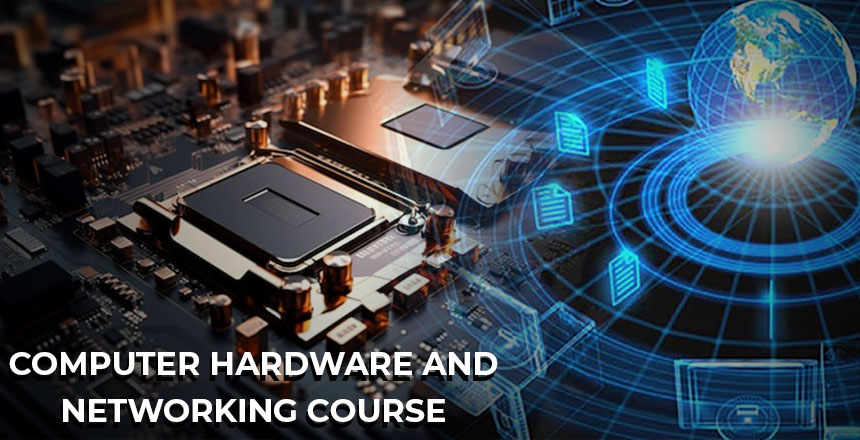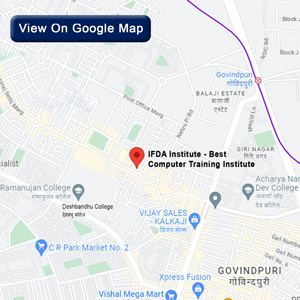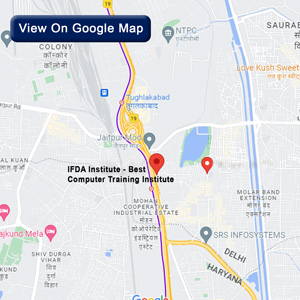Computers Hardware And Networking Course

An Introduction to Computers: Hardware and Networking
Computing hardware and networks are at the heart of contemporary technology; the courses in these areas are critical for students who plan to work in the technology field. In the following blog post, I will offer an overview of what you will learn about in any course in computer hardware and networking.
An Overview of Computer Hardware
Computer hardware is the tangible parts of a computing system, embracing both internal and external devices. Some of the core hardware components you need to know about include:
The part that does the work of performing mathematical operations using given commands is the computer part. A CPU is made of one or more cores, with higher-speed CPUs having more cores.
RAM (Random Access Memory) It’s the working space that holds some of the files, programs, and data the CPU is currently operating on. RAM allows for having open a variety of applications and/or multiple browser windows and tabs without the system being slow; the greater the amount of accessible RAM, the more applications and/or tabs one can have open simultaneously.
A large PCB in a computer system to provide communication and mechanical support for the CPU, RAM, graphics card, and other components. Motherboards are available in various form factors depending on the kind of chassis or parts it has to fit in.
Storage Devices:- Storage is the process of allowing you to keep data for as long as you desire. Internal or RAM storage can be HDD or SSD. Examples of external options are in flash drives and external hard drives. It is possible to have one or a few gigabytes as well as tens of terabytes of storage inside a high-end enterprise storage array.
Graphics Card:- Necessary graphic card for output video to your monitor. Graphic cards include what is referred to as GPUs (Graphics Processing Units), which are the ones responsible for processing and outputting all the images and videos to your viewer. They are required by gamers, video editors, 3D graphic designers, and people requiring these functions.
Power Supply:- Builds your entire computer's power because all connectors and cables to run every part of a computer are usually found here. Designers of power supplies require specific inputs to ensure they deliver clean and stable power to avoid system crashes and destructions.
This provides you with a basic idea of some of the major essential hardware components. A full overview of computer hardware is going to significantly elaborate in details about each of the components that it is composed of.
Computer Networking Basics
Something that is also important is that apart from the basics of computers and their internals, there is networking. Some key networking basics include:
OSI Model: -A network model whose computer networking is divided into seven layers of structures, including the physical layer, data link layer, network layer, transport layer, session layer, presentation layer, and application layer. This model can be used to actually visualize how the network data moves.
Protocol—Internet Protocol addresses—These are the numerical addresses of every connection media interface to the internet. You need to know why IPv4 and IPv6 are different, and you need to know how to see the difference between the addresses.
TCP/IP is the primary layer of internet communications that describes how information must be packaged, labeled, sent, switched, and/or received on the internet or available local networks.
DNS (Domain Name System):- A database that is similar to the database server that is distributed globally and helps in mapping domain name to IP address, which between easy-to-remember alphanumeric strings to find an internet resource.
VPNs are virtual private networks that involve the possibility of logically extending an organization’s private network on to other public networks to enable organized and secure access of distant organizational networks together with enhanced security features.
Wi-Fi is the set of standards for wireless broadband access.
End User Devices: These are the physical computing devices such as desktop computers, laptops, smart phones, tablets, printers, and servers, among others, that enable the users of the network.
As with any topic, there are an immense number of other areas of networking technologies to explore; however, the topics outlined above will give the reader an understanding of how basic network communication works.
Computer Hardware and Networking: Its Significance
It is important to obtain knowledge about the computer hardware and the networking because both are the fundamental foundations of the contemporary world. Understanding how computers and networks work enables careers in:
It is similar to owning a computer, server, or networking company and being responsible for managing all those for different companies.
Computer Technician Job Description :- Fixing and solving computer peripheral problems.
Network Engineering :- Dealing with the construction, installation, operation, and planning of communication networks.
Cybersecurity, that is, safety of systems, networks, and data from threats and unauthorized access, including frauds.
Web Development :- Developing web sites and applications using networking protocols and interface fabrication.
System Administration :- Installing the operating systems on the computer system, providing the necessary support, and fine-tuning.
And many other high-paying popular technology jobs require thinking that comes from computer hardware and networking courses.
If you are interested in working with technology or just want to know more about these ‘back end’ principles supporting our digital encounters, knowledge on computer hardware and networking is incredibly beneficial. It is my understanding that this outline for the beginner will provide some knowledge of fundamental ideas and make interested in further study. If there are any more areas of hardware or networking you’d like me to cover in the future, please let me know in the comments below.









